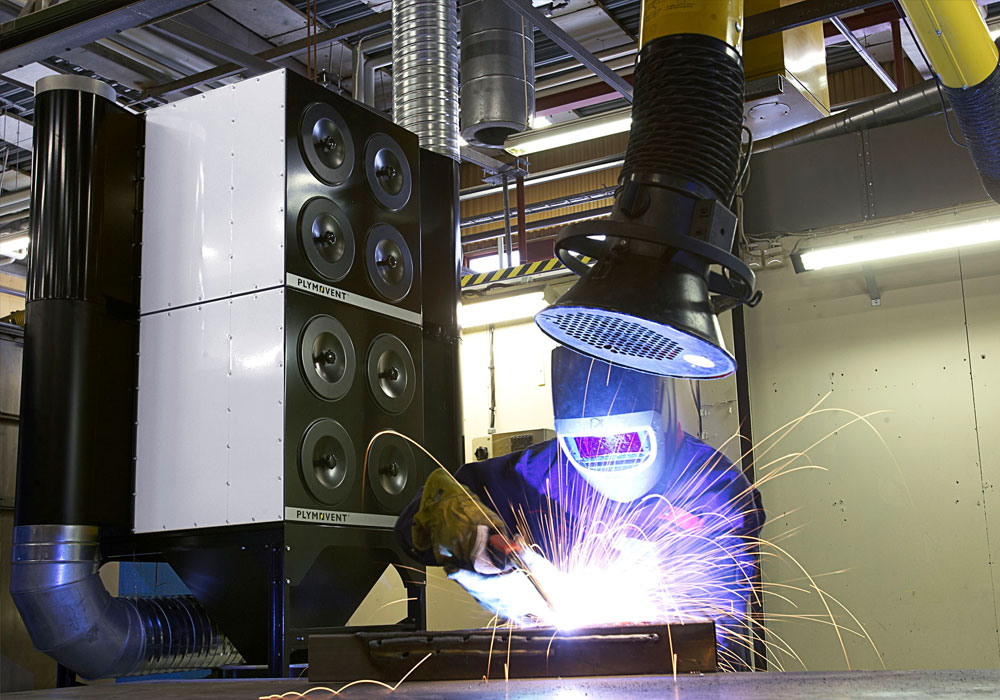What Is The Workplace Exposure Limit?
Established by the Health and Safety Executive (HSE), Workplace Exposure Limits (WELs) are designed to protect workers from exposure to hazardous substances in the workplace. Understanding and managing Workplace Exposure Limits is essential for ensuring a safe and healthy work environment.
This article provides an in-depth understanding of the Workplace Exposure Limit, how it is tested and monitored, and how Local Exhaust Ventilation (LEV) systems can help keep these exposures under control.
What Is the Workplace Exposure Limit (WEL)?
The Control of Substances Hazardous to Health (COSHH) Regulations 2002 requires employers to control substances that can harm workers’ health. In addition, the Health and Safety at Work Act 1974 obligates employers to ensure employees’ health, safety, and welfare at work. This means employers are legally obligated to provide employees with a safe and healthy work environment where airborne contaminants are present.
The Workplace Exposure Limit (WEL) is a regulatory limit on the amount or concentration of a substance in the air, designed to protect workers from the harmful effects of exposure to hazardous substances in the workplace. It is defined as the maximum amount of a hazardous substance a worker can be exposed to over a specific period. It is typically measured as a time-weighted average over 8 hours (long-term exposure) or 15 minutes (short-term exposure).
Maintaining low exposure limits is crucial for protecting workers’ health and complying with UK regulations. High levels of exposure to hazardous substances can lead to severe health conditions, including respiratory diseases, cancers, neurological disorders, and skin conditions.
Types of Workplace Exposure Limits Explained
Workplace exposure limits vary based on the type of contaminant and the potential health risks associated with it. There are several types of exposure limits, including:
- Time-Weighted Average (TWA): The average exposure over a standard workday (usually 8 hours) and a 40-hour workweek. TWA is used for contaminants with chronic effects.
- Short-Term Exposure Limit (STEL): The maximum concentration to which workers can be exposed for a short period, typically 15 minutes. STEL is critical for substances with acute effects.
- Ceiling Limit (C): The concentration that should not be exceeded during the workday. Ceiling limits are set for highly toxic substances that can cause immediate harm.
Prolonged or high-level exposure to hazardous substances can cause acute or chronic health issues, including respiratory diseases, skin disorders, organ damage, and even cancer. Ensuring exposure stays within WELs helps protect workers from these serious health risks.
Testing and Monitoring Workplace Exposure Limits
Implementing a regular monitoring program to assess exposure levels and ensure they remain within WELs continuously is essential. This involves real-time monitoring using portable devices that provide immediate readings of contaminant levels in the air.
Controlling Exposure with Local Exhaust Ventilation (LEV) Systems
Local Exhaust Ventilation (LEV) is an engineering control system designed to reduce worker exposure to airborne contaminants by capturing emissions at the source before they can disperse into the workplace air.
Here’s an LEV System works:
- Capture Hood: Placed close to the source of contaminants to capture emissions.
- Ducting: Transports contaminated air from the hood to a filtration or exhaust point.
- Air Cleaner: Filters contaminants from the air.
- Fan: Creates airflow to transport contaminants through the system.
- Discharge: Cleaned air is expelled outside the workplace.
Workplace exposure limits are essential for safeguarding worker health and ensuring a safe working environment. Businesses can effectively manage and minimise exposure risks by understanding workplace exposure limits and implementing an LEV system as an engineering control.
LEV systems protect workers’ health by reducing the concentration of hazardous substances in the air and minimising the risk of respiratory problems, skin issues, and other occupational diseases. Investing in Local Exhaust Ventilation (LEV) systems is a proactive step businesses can take to mitigate exposure risks effectively.
At LEV Engineering, we offer end-to-end LEV solutions tailored to your specific industry requirements. Learn more about our LEV services, or speak to a team member to discuss your requirements.

